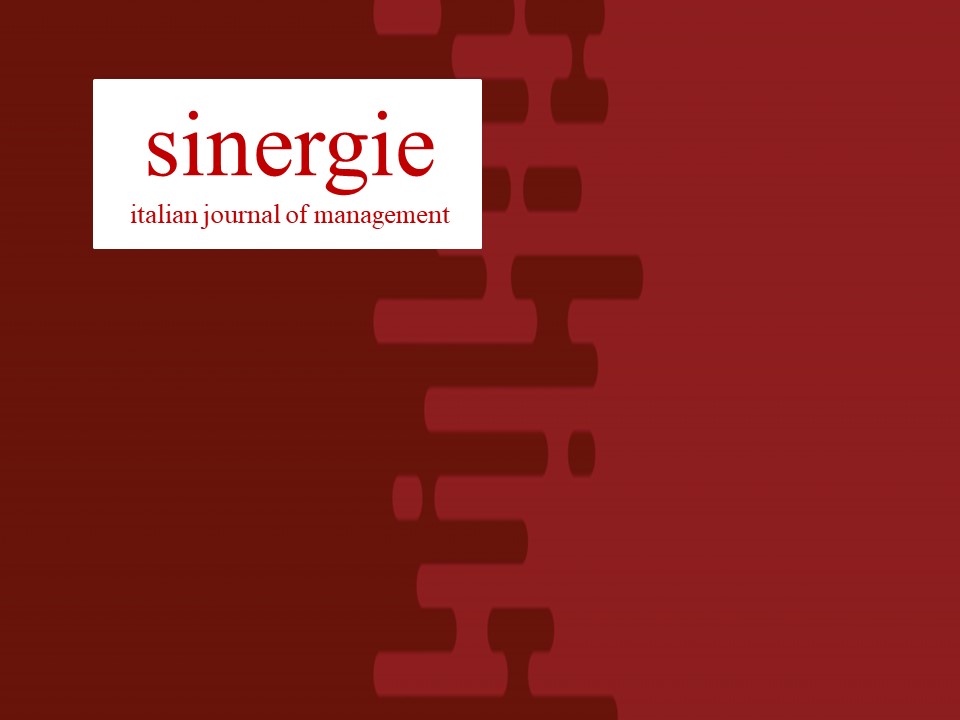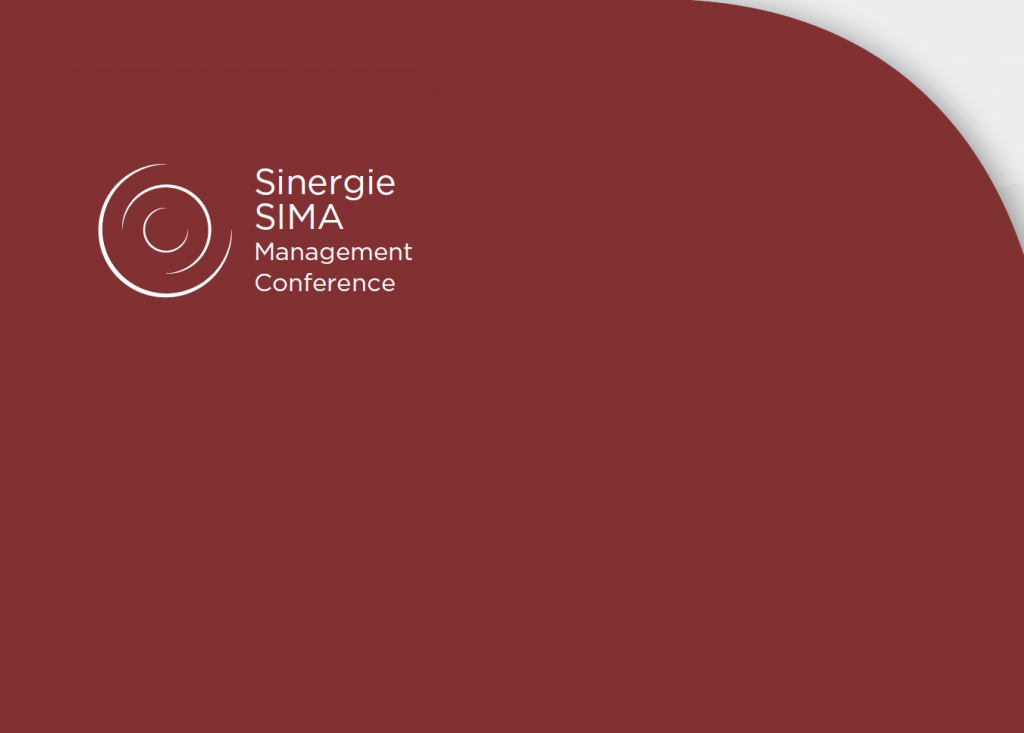Reputazione e monitoraggio della competizione in tempo reale: le sfide innovative del pricing online
Obiettivo del paper: Indagare le diverse strategie di prezzo dinamico realizzate attraverso il canale delle vendite online, in un contesto di servizi con capacitproduttiva predeterminata.
Metodologia: Analisi di regressione su un database costruito simulando la prenotazione di una camera di hotel attraverso linterrogazione di un motore di ricerca online (booking.com). Il database costituito da 57 hotel, osservati rispetto a 16 diverse ipotesi di data di soggiorno, seguendo per ciascuna landamento del prezzo a partire da una prenotazione effettuata con 90 giorni di anticipo fino ad una prenotazione last minute.
Risultati: Le strategie di prezzo dinamiche degli hotel tengono conto sia dellapprossimarsi della data di soggiorno sia dellandamento dinamico dellofferta degli altri operatori sul mercato. Inoltre, si dimostra il forte impatto sul prezzo della reputazione online derivante dalle recensioni sul web.
Limiti della ricerca: Le strategie sono analizzate esclusivamente dal lato dellofferta senza indagarne allo stesso tempo lefficacia in termini di effettivo comportamento di acquisto dei consumatori.
Implicazioni pratiche: I miglioramenti nel campo dellICT permettono ladozione di sistemi di prezzo variabile automatici, creando un rapporto innovativo con la domanda finale e suggerendo ai manager un ripensamento delle strategie di prezzo di breve e di lungo termine.
Originalitdel lavoro: Si tratta del primo lavoro che analizza contemporaneamente leffetto sul prezzo delle variabili statiche legate alle caratteristiche di un hotel e delle variabili dinamiche legate allimplementazione di tecniche di gestione dinamica dei ricavi, tenendo conto inoltre dellinterrelazione con il contesto competitivo e dei giudizi di soddisfazione dei clienti ricevuti online.
Riferimenti bibliografici
ABRATE G., CAPRIELLO A., FRAQUELLI G. (2011), When quality signals talk: evidence from the Turin hotel industry, Tourism Management, vol. 32, n. 4, pp. 912-921.
ABRATE G., FRAQUELLI G., VIGLIA G. (2012), Dynamic pricing strategies: evidence from European hotels, International Journal of Hospitality Management, vol. 31, n. 1, pp. 160-168.
ANDERSON C.K., XIE X. (2010), Improving Hospitality Industry Sales. Twenty-Five Years of Revenue Management, Cornell Hospitality Quarterly, vol. 51, n. 1, pp. 53-67.
BALAGUER J., PERNAS J.C. (2013), Relationship between spatial agglomeration and hotel prices. Evidence from business and tourism consumers, Tourism Management, vol. 36, pp. 391-400.
BARRON J.M., TAYLOR B.A., UMBECK J.R. (2004), Number of sellers, average prices and price dispersion, International Journal of Industrial Organization, vol. 22, n. 8-9, pp. 1041-1066.
BECERRA M., SANTAL J., SILVA R. (2013), Being better vs. being different: differentiation, competition, and pricing strategies in the Spanish hotel industry, Tourism Management, vol. 34, pp. 71-79.
BICKART B., SCHINDLER R. (2001), Internet forums as influential sources of consumer information, Journal of Interactive Marketing, vol. 15, n. 3, pp. 31-40.
BONFANTI A. (2013), Towards an Approach to Signage Management Quality, Journal of Services Marketing, vol. 27, n. 4, pp. 312-321.
BULL A.O. (1994), Pricing a motels location, International Journal of Contemporary Hospitality Management, vol. 6, n. 6, pp. 10-15.
CHAMBERLIN E. H. (1933), The Theory of Monopolistic Competition, MA, Harvard University Press, Cambridge.
CROSS R.G. (1997), Revenue Management: Hard-Core Tactics for Market Domination, NY: Broadway Books, New York.
CROSS R.G., HIGBIE J.A, CROSS Z.N. (2011), Milestones in the application of analytical pricing and revenue management, Journal of Revenue and Pricing Management, vol. 10, n. 1, pp. 8-18.
DAMBRA J., WILSON C. (2004), Use of the World Wide Web for international travel: integrating the construct of uncertainty in information seeking and the task-technology fit (TTF) model, Journal of the American Society for Information Science and Technology, vol. 55, n. 8, pp. 731-742.
DIXIT A., BRAUNSBERGER K., ZINKHAN G., PAN Y. (2005), Information technology-enhanced pricing strategies: managerial and public policy implications, Journal of Business Research, vol. 58, n. 9, pp. 1169-1177.
DIXIT A., WHIPPLE T., ZINKHAN G., GAILEY E. (2008), A taxonomy of information technology-enhanced pricing strategies, Journal of Business Research, vol. 61, n. 4, pp. 275-283.
ESPINET J.M., SAEZ M., COENDERS G., FLUIVA M. (2003), Effect on prices of the attributes of holiday hotels: a hedonic price approach, Tourism Economics, vol. 9, n. 2, pp. 165-177.
GALE I., HOLMES T. (1993), Advance purchase discounts and monopoly allocation of capacity, American Economic Review, vol. 83, n. 1, pp. 135-146.
GARBARINO E., MAXWELL S. (2010), Consumer response to norm-breaking pricing events in e-commerce, Journal of Business Research, vol. 63, n. 9, pp. 1066-1072.
GHOSE A., IPEIROTIS P. (2006), Towards an understanding of the impact of customer sentiment on product sales and review quality, Information Technology and Systems, n. 12, pp. 1-6.
GODES D., MAYZLIN D. (2009), Firm-created word-of-mouth communication: evidence from a field test, Marketing Science, vol. 28, n. 4, pp. 721-739.
GRETZEL U., YOO K. (2008), Use and impact of online travel reviews, in OConnor P., Hopken W., Gretzel U. (a cura di), Information and Communication Technologies in Tourism, Soringer-Verlag, Wien/New York.
GRNROOS C., OJASALO K. (2004), Service productivity: Towards a conceptualization of the transformation of inputs into economic results in services, Journal of Business Research, vol. 57, n. 4, pp. 415-423.
HAYES D.K., MILLER A. (2011), Revenue Management for the Hospitality Industry, John Wiley and Sons, Lansing.
HERR P., KARDES F., KIM J. (1991), Effects of word-of-mouth and product attribute information on persuasion: An accessibility-diagnosticity perspective, Journal of Consumer Research, vol. 17, n. 4, pp. 454-462.
HU N., BOSE I., KOH N.S., LIU L. (2012), Manipulation of online reviews: an analysis of ratings, readability, and sentiments, Decision Support Systems, vol. 52, n. 3, pp. 674-684.
INGOLD A., YEOMAN I., LEASK A. (2000), Yield Management: Strategies for the Service Industries, Thomson Learning, Londra.
ISRAELI A.A. (2002), Star rating and corporate affiliation: their influence on room price and performance of hotels in Israel, International Journal of Hospitality Management, vol. 21, n. 4, pp. 405-424.
JOSANG A., ISMAIL R., BOYD C. (2007), A Survey of Trust and Reputation System for Online Service Provision, Decision Support Systems, vol. 43, n. 2, pp. 618-644.
KANNAN P. K., KOPALLE P. K. (2001), Dynamic pricing on the Internet: importance and implications for consumer behavior, International Journal of Electronic Commerce, vol. 5, n. 3, pp. 63-83.
KOTLER P., BOWEN J.I., MAKENS J.C. (2010), Marketing for hospitality and tourism (5th ed.), Pearson, Boston e London.
LANCASTER K.J. (1966), A new approach to consumer theory, Journal of Political Economy, vol. 74, n. 2, pp. 132-156.
LEWIS R.C., CHAMBERS R.E. (2000), Marketing leadership in hospitality foundation and practises (3rd ed.), Wiley, New York.
MAURI A.G. (2013), Hotel Revenue Management: Principles and Practices, Pearson, Milano.
MAURI A.G., MINAZZI R. (2013), Web reviews influence on expectations and purchasing intentions of hotel potential customers, International Journal of Hospitality Management, vol. 34, pp.99-107.
MORRISON A.J. (1998), Small firm co-operative marketing in a peripheral tourism region, International Journal of Contemporary Hospitality Management, vol. 10, n. 5, pp. 191-197.
MUSSO F. (2012), Prospettive di analisi per linnovazione nei canali di marketing, Mercati
e competitivit, vol. 2012/3, n. 3, pp. 85-106.
NETESSINE S., SHUMSKY R. (2002), Introduction to the theory and practice of yield management, Transactions on education, vol. 3, n. 1, pp. 34-44.
NICOLAU J.L., SELLERS R. (2010), The quality of quality awards: diminishing information asymmetries in a hotel chain, Journal of Business Research, vol. 63, n. 8, pp. 832-839.
PAN B., MACLAURIN T., CROTTS J. (2007), Travel blogs and the implications for destination marketing, Journal of Travel Research, vol. 46, n. 1, pp. 35-45.
PETERSON R. (2005). Investing Lessons from Neuroscience: fMRI of the reward system, Brain Research Bulletin, vol. 67, n. 5, pp. 391-397.
PETTY R.E., CACIOPPO J.T. (1984), The effects of involvement on response to argument quantity and quality: central and peripheral routes to persuasion, Journal of Personality and Social Psychology, vol. 46, n. 1, pp. 69-81.
PIGA C., BACHIS E. (2006), On-line price discrimination with and without arbitrage conditions, Mimeo.
PULLMAN M., RODGERS S. (2010), Capacity management for hospitality and tourism: A review of current approaches, International Journal of Hospitality Management, vol. 29, n. 1, pp. 177-187.
RAFI M. (2012), Why online retailers new pricing strategy will backfire, Harvard Business Review Blog Network, 19 dicembre 2012, http://blogs.hbr.org/
RATCHFORD B. (2009), Online Pricing: Review and Directions for Research, Journal of Interactive Marketing, vol. 23, n. 1, pp. 82-90.
RESCINITI R., MATARAZZO M. (2012), I nuovi mercati e le strategia di entrata, Sinergie, n. 89, pp. 209-230.
SANJAY K. (2009), Yield Management: getting more out of what you already have, Ericsson Business Review, vol. 1, n. 2, pp. 17-19.
SILVESTRELLI S. (2004), Linnovazione nei settori industriali: implicazioni di mercato e nuove logiche concorrenziali, Sinergie, n. 64-65, pp. 25-64.
SIMON H., ZATTA D., FASSNACHT M. (2013), Price management, Franco Angeli Editore, Milano.
STIGLITZ J.E. (1987), Competition and the number of firms in a market: Are duopolies more competitive than atomistic markets, Journal of Political Economy, vol. 95, n. 5, pp. 1041-1061.
SU X. (2007), Inter-temporal pricing with strategic customer behavior, Management Science, vol. 53, n. 5, pp. 726-741.
TALLURI K., VAN RYZIN G. (2004), The Theory and Practice of Revenue Management, Kluwer Academic Publishers, Norwell, Massachusetts.
THRANE C. (2005), Hedonic price models and sun-and-beach package tours: the Norwegian case, Journal of Travel Research, vol. 43, n. 3, pp. 302-308.
THRANE C. (2007), Examining the determinants of room rates for hotels in capital cities: the Oslo experience, Journal of Revenue and Pricing Management, vol. 5, n. 4, pp. 302-308.
TSO A., LAW R. (2005), Analysing the online pricing practices of hotels in Hong Kong, International Journal of Hospitality Management, vol. 24, n. 2, pp. 301-307.
VIGLIA G. (2013), The impact of yield management, Impresa Progetto, n. 1, pp. 1-15.
WHITE P.J., MULLIGAN G.F. (2002), Hedonic estimates of lodging rates in four corners region, The Professional Geographer, vol. 54, n. 4, pp. 533-543.
XIE H.J., MIAO L., KUO P.J., LEE B.Y. (2011), Consumers responses to ambivalent online hotel reviews: the role of perceived source credibility and predecisional disposition. International Journal of Hospitality Management, vol. 30, n. 1, pp. 178-183.
YE Q., ROB L., GU B. (2009), The impact of online user reviews on hotel rooms sales, International Journal of Hospitality Management, vol. 28, n. 1, pp. 180-182.
ZHU F., ZHANG X. (2010), Impact of online consumer reviews on sales: the moderating role of product and consumer characteristics, Journal of Marketing, vol. 74, n. 2, pp. 133-148.
http://www.booking.com


